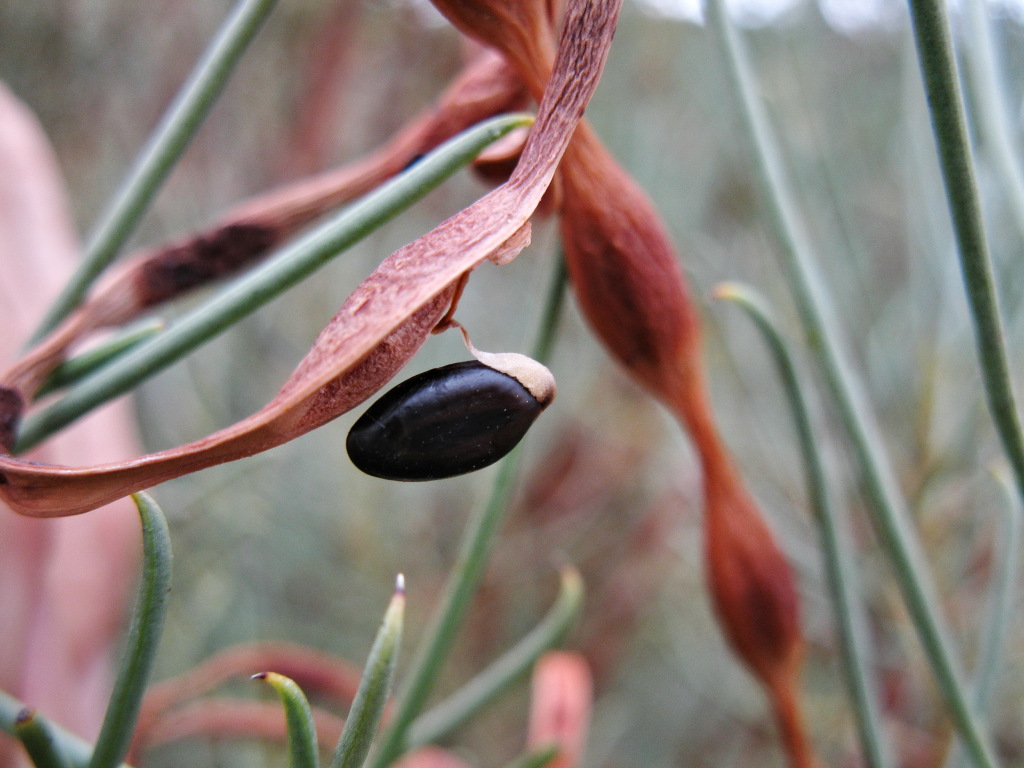Acacia euthycarpa
(J.M.Black) J.M.Black WallowaUsually a shrub 2–4 m high; branchlets and new shoots glabrous. Phyllodes narrowly linear to narrowly oblanceolate, mostly 3–10 cm long and 1–5 mm wide, terete to flat, shortly acuminate with delicate, curved points, green to grey-green, glabrous, sometimes scurfy; 1-veined per face when fiat (but 4-veined in all), veins not prominent and often somewhat impressed; gland 5–10 mm above pulvinus. Inflorescences usually racemose, rachis usually 1-4(–40) mm long, glabrous, mostly 2–4(–13)-headed; peduncles 4–10 mm long, glabrous; heads globular to obloid, 25–40-flowered, golden. Flowers 5-merous; sepals free or united. Pods moniliform to linear, normally to c. 15 cm long, 3–6 mm wide, coriaceous to crustaceous, glabrous; seeds longitudinal, oblong-elliptic, 4–8 mm long, dull to slightly shiny, dark brown to black; funicle half to wholly encircling seed, dark reddish, aril clavate. Flowers mostly Aug.–Oct.
LoM, MuM, Wim, GleP, VVP, VRiv, MuF, GipP, Gold, CVU, GGr, DunT, HNF. Also SA. Common in northwestern Victoria growing on a variety of soil types, mainly in woodland and open scrub.
Some specimens with phyllodes that are narrowly oblanceolate, 2–5 mm wide and 10–20 times as long as wide were formerly called Acacia microcarpa var. linearis. This name is synonymous with A. ×grayana (= A. brachybotrya × A. euthycarpa subsp. euthycarpa) which is rather arbitrarily distinguished from A. euthycarpa subsp. oblanceolata by its hairy new shoots and peduncles. Acacia euthycarpa subsp. oblanceolata is confined in Victoria to the Wedderburn-Wychitella and may be a substantial tree to 10 m high.
Entwisle, T.J.; Maslin, B.R.; Cowan, R.S.; Court, A.B. (1996). Mimosaceae. In: Walsh, N.G.; Entwisle, T.J., Flora of Victoria Vol. 3, Dicotyledons Winteraceae to Myrtaceae, pp. 585–658. Inkata Press, Melbourne.
 Spinning
Spinning

